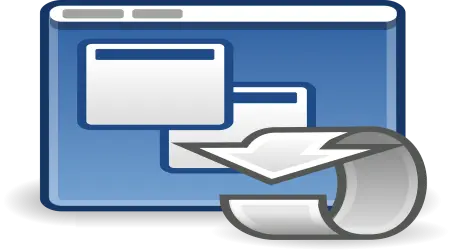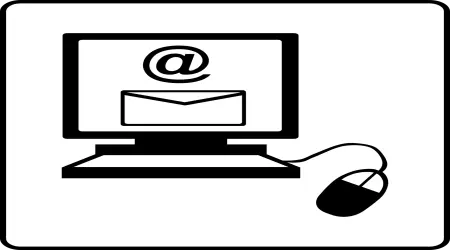

Email for one time use
The concept of a one-time use email is built on simplicity. You visit a service that offers temporary emails, and it instantly generates an inbox without asking for personal details. This makes it extremely attractive to users who value privacy. Such an inbox is live for a few minutes or hours and allows you to receive emails during that short window. Once you’re done, the email is discarded automatically, and nothing is tied to your real identity or long-term data footprint.
Imagine a situation where you're asked to register on a website to download an eBook. You have no intention of becoming a long-term subscriber, and you don’t want future emails from that site. A one-time use email allows you to sign up, get the content, and walk away without ever hearing from the website again. This single-use behavior provides convenience and control. It's an effective shield against long-term email commitments that users never truly signed up for with interest.
These disposable emails are particularly helpful in testing environments. Developers often use them to check sign-up flows, newsletter integrations, and password reset systems. They’re ideal when you need a fresh inbox for every test scenario without the hassle of creating multiple Gmail or Outlook accounts. It removes the friction involved in creating full-fledged email accounts for temporary tasks. Furthermore, it reduces the risk of misuse or unauthorized access during development and testing phases.
In a business context, marketing teams use one-time use emails to test competitor campaigns, validate email automation, or even perform secret shopping without being traced back to their official company domain. It introduces a layer of anonymity that supports strategic research and competitive analysis. The one-time use email also comes in handy during feedback collection or survey processes when you want honest responses without the bias of identification.
For users concerned about online privacy, these temporary email solutions are a gateway to protecting their digital identity. In a world where data is constantly mined, sold, or breached, maintaining control over one's communication channels has become essential. When you use a regular email for signing up to random platforms, it often gets shared or sold to advertisers. This is where the throwaway nature of one-time use emails becomes not just convenient but essential. It becomes a proactive defense mechanism in the war against unsolicited data harvesting.
Additionally, email for one time use provides convenience for people working remotely or those frequently engaging with new online tools. Instead of linking their professional or personal email, they can quickly generate a temp email and explore platforms, communities, or resources without the fear of leaving a trace behind. This kind of ephemeral communication adds a sense of freedom and security that's hard to come by in the always-connected digital age.
These services are typically web-based, requiring no software installation or app download. Many are also mobile-friendly, making it easy to create a temporary email even from your phone. The process is often as simple as visiting a site, copying the generated email address, and pasting it wherever needed. Some platforms even offer browser extensions for quicker access, further improving the ease of use. These enhancements make temporary email solutions accessible to both tech-savvy individuals and casual users alike.
There are dozens of free platforms that offer one-time use email services. Some examples include 10MinuteMail, GuerrillaMail, TempMail, Maildrop, and ThrowAwayMail. Each of these has slightly different features and expiration times. Some emails disappear after 10 minutes, others allow for extended durations or even manual disposal. A few services go further by offering custom domains, the ability to receive attachments, or even reply functionality. These features make them versatile tools in your privacy toolkit.
While the main advantage lies in privacy and convenience, there are security benefits too. Using a disposable email reduces the risk of phishing and malicious attacks, especially when trying out new or sketchy platforms. Even if a service is compromised or malicious actors gain access, your primary inbox remains untouched. This acts as a strong first line of defense in your personal cybersecurity strategy.
One concern some people have is whether websites detect and block temporary emails. It's true that certain services now blacklist known disposable email domains. In such cases, users either switch to lesser-known providers or use temporary aliases offered by privacy-focused services. Some advanced temporary email platforms rotate their domain names regularly to bypass such restrictions, helping users continue their anonymous interactions with ease.
Another interesting use case for one-time use emails is in online shopping. Many consumers use them to grab first-time customer discounts or participate in referral promotions without committing their real address. This practice has grown, especially during major online sales when users are flooded with newsletter requirements just to unlock special offers. A disposable inbox ensures they get the coupon without sacrificing long-term peace of mind.
There's also a psychological advantage to using one-time emails. It reduces inbox anxiety. People often feel overwhelmed by the number of unread messages or newsletters they never wanted. By isolating temporary sign-ups from their main inbox, users can keep their communication channels clean and stress-free. It’s an intentional step toward digital minimalism, letting you regain control over your digital life.
Students and researchers also find value in these tools. They can access academic materials, download case studies, or register for webinars without exposing their university email accounts. Similarly, journalists and activists operating in high-risk environments often rely on temporary email addresses for safer communication. It offers them a shield, allowing for brief, secure interactions that vanish without a trace once their job is done.
The rise of online forums and community platforms has also increased the relevance of one-time use emails. Many forums require email validation before participation, even for a single question. Instead of revealing a personal inbox, users turn to temporary emails to get in, ask their question, and exit the scene. This lightweight method respects the one-time nature of the interaction while fulfilling the requirements of the platform.
Gaming communities often see players using disposable emails for creating alternate accounts, accessing bonus content, or even testing game mechanics. It's a way to explore without affecting their main profile. Similarly, e-learning platforms are another hotbed for one-time email usage. Learners who want to audit a course or test platform functionality without commitment can use temporary emails to sign up, explore, and leave freely.
Content creators, influencers, and digital entrepreneurs use these emails when building mailing lists or testing email campaigns. It allows them to experiment with signup forms, sequence flows, and confirmation processes from a neutral perspective. It’s a sandbox approach to email marketing, all without contaminating personal or professional inboxes. This fosters innovation and helps optimize user experiences across platforms.
Some advanced users integrate one-time use email services with automation tools. This enables bulk testing of email workflows or mass signups without manual effort. Automation paired with temporary inboxes speeds up QA processes in product development cycles and reduces manual overhead. It's a clever workaround for repetitive tasks that would otherwise require significant time and attention.
It's worth noting that not all one-time emails are created equal. Some offer higher reliability, faster refresh rates, or better user interfaces. A few providers maintain GDPR compliance and strong data policies, giving peace of mind to users in privacy-sensitive regions. It’s always a good idea to compare features such as domain variety, inbox lifespan, attachment support, and spam filtering before choosing a platform. These criteria make a big difference in usability and long-term satisfaction.
The demand for one-time use emails is likely to increase as people become more privacy-conscious. It fits into the broader movement of decentralization, anonymity, and self-control in digital spaces. As more companies push aggressive marketing and data collection strategies, users will lean on tools that help them manage exposure. Temporary emails are part of this modern defense system, empowering users with a sense of autonomy.
Even casual internet users can benefit from using one-time emails. Whether it's downloading a wallpaper, getting a recipe PDF, or accessing a temporary file-sharing link, the tool simplifies the process. It’s less about hiding and more about streamlining. No passwords to remember, no inbox maintenance, just quick interaction and clean exit. It removes friction from online tasks, making life smoother for everyone.
These tools are also useful during travel. People often need to access Wi-Fi networks in airports, hotels, or cafes that require email registration. Instead of sharing your real email with unknown third-party networks, you can use a temporary one to get access without strings attached. This prevents your personal data from being stored or misused by unknown providers, adding another layer of travel-friendly cybersecurity.
While it's easy to assume temporary emails are only for tech-savvy people, the truth is they’ve become incredibly user-friendly. Anyone with a browser can use them. They’re designed with simplicity in mind, from interface to inbox management. This democratization of privacy tools ensures that more people can benefit from them without needing technical expertise.
The ethical use of one-time emails is important. They should never be used for fraud, impersonation, or violating platform terms. When used responsibly, they are a powerful tool for privacy, efficiency, and convenience. As more people understand the benefits and boundaries, these tools will become a staple in everyday internet use, much like VPNs or password managers.
Would you like me to begin the next keyword article now?




